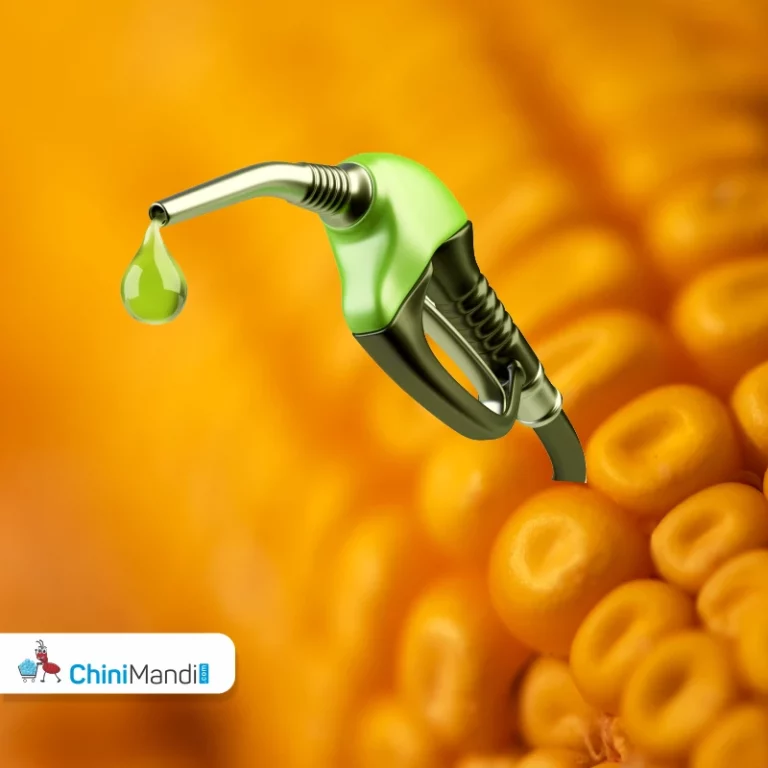Ethanol used in petrol now more from maize, damaged foodgrains than sugar

Cereal grains, notably maize and damaged foodgrains, have surpassed sugarcane as the primary feedstock for ethanol production in India. For the supply year 2023-2024, ethanol from grains made up 52.7% of the total 401 crore liters supplied, marking the first time grains have contributed over 50%. This shift follows government incentives and restrictions on cane-based ethanol production. The move aims to meet the 20% ethanol blending target by 2025, but has sparked concerns over maize shortages in other sectors.
CEREAL GRAINS have overtaken sugarcane as the primary feedstock for the production of ethanol used in blending with petrol.
In the current supply year (November 2023-October 2024), sugar mills and distilleries supplied 401 crore litres of ethanol to oil marketing companies till June 30. Of that, 211 crore litres or 52.7% was ethanol produced using maize and damaged foodgrains (mainly broken/ old rice not fit for human consumption), while sugarcane-based feedstocks (molasses and whole juice/ syrup) accounted for the remaining 190 crore litres.
This is the first time that the contribution of grains to India’s ethanol production has surpassed 50% — from 27.1% in 2022-23, 16.7% in 2021-22, 13.6% in 2020-21, 9.2% in 2019-20, 5% in 2018-19 and zero in 2017-18.
Ethanol is 99.9% pure alcohol that can be blended with petrol. This is unlike the 96% extra neutral alcohol that goes to make potable liquor or the 94% rectified spirit used in paints, cosmetics, pharmaceuticals and other industrial products.
The Narendra Modi-led government has targeted 20% ethanol blending in petrol by 2025. That ratio for all-India averaged 13% this supply year till June, as against 12.1% in 2022-23, 10% in 2021-22 and only 1.6% in 2013-14.
In 2023-24 itself, there’s been a steady monthly rise: 10.2% in November, 11.2% in December, 12.2% in January, 12.9% in February, 12.8% in March, 12.7% in April, 15.4% in May and 15.9% in June.
Alcohol production involves fermentation of sugar using yeast. In cane juice or molasses, sugar is present in the form of sucrose that is broken down into glucose and fructose. Grains contain starch, a carbohydrate that has to first be extracted and converted into sucrose and simpler sugars, before their further fermentation, distillation and dehydration to ethanol.
Till 2017-18, ethanol was being produced only from so-called C-heavy molasses, the dense dark brown liquid byproduct containing sucrose that mills cannot economically recover and crystallise into sugar.
The ethanol blended petrol (EBP) programme received a boost in 2018-19, when the Modi government enabled mills to produce it from an earlier ‘B-heavy’ stage molasses (leaving less sugar available for crystallisation and more for fermentation) and directly from whole cane juice/ syrup. Mills were paid higher prices for the ethanol produced through these routes to compensate them for revenues foregone from reduced/nil production of sugar.
A further fillip to the programme came when mills started using grains as supplementary feedstock. Companies such as Triveni Engineering & Industries Ltd (TEIL), DCM Shriram, Dhampur Sugar Mills, Balrampur Chini, EID Parry and Nirani Sugars installed multi-feedstock distilleries that could run on molasses and juice/ syrup during the crushing season (November-April) and on grain in the off-season (May-October), when cane wasn’t available.
The grains were mostly surplus and broken/ damaged rice sourced from the Food Corporation of India’s (FCI) stocks and the open market. But with the Modi government stopping the supply of FCI rice (from July 2023) and restricting the use of cane juice and B-heavy molasses for ethanol production (from December 2023) — on concerns over cereal and sugar inflation — maize has emerged as the top ethanol feedstock.
That has also been incentivised by the government fixing an ex-distillery price of Rs 71.86 per litre for ethanol produced from maize. This is higher than the per-litre prices payable by oil companies for ethanol from other feedstocks: C-heavy molasses (Rs 56.28), B-heavy molasses (Rs 60.73), cane juice/syrup (Rs 65.61), FCI rice (Rs 58.50) and damaged foodgrains (Rs 64).
“The EBP programme has envisioned using a variety of feedstocks that are in ample surplus nationwide to meet the substantial ethanol demand. All our new distilleries have the flexibility to operate on multiple feedstocks,” said Tarun Sawhney, vice chairman and managing director of TEIL, which has a distillation capacity of 860 kilo-litres-per-day (KLPD), including 400 KLPD of multi-feed.
However, while ethanol-driven demand is good news for maize farmers in major growing states like Karnataka, Madhya Pradesh, Maharashtra and Bihar, not everyone is happy.
The All India Poultry Breeders Association and Compound Livestock Feed Manufacturers Association have written to the government, claiming shortage in domestic availability of maize. They have estimated the country’s production at 36 million tonnes (mt), as against the requirement of 41 mt, including for ethanol blending.
The Centre, on June 26, permitted 0.5 mt of maize imports at 15% concessional duty, routed through the National Agricultural Cooperative Marketing Federation of India. The poultry and feed industry has sought imports of up to 5 mt to be allowed by “actual users” at zero duty.
Source Link : https://indianexpress.com/article/india/ethanol-used-in-petrol-now-more-from-maize-damaged-foodgrains-than-sugar-9481641/
















